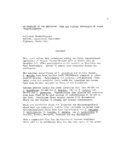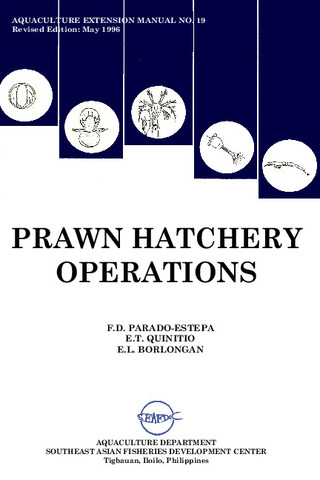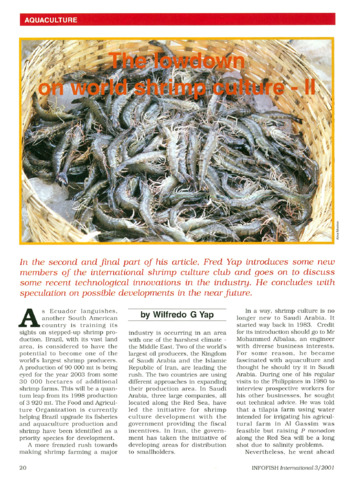Poly-β-hydroxybutyrate (PHB) accumulating Bacillus spp. improve the survival, growth and robustness of Penaeus monodon (Fabricius, 1798) postlarvae
| dc.contributor.author | Laranja, Joseph Leopoldo | |
| dc.contributor.author | Ludevese-Pascual, Gladys | |
| dc.contributor.author | Amar, Edgar C. | |
| dc.contributor.author | Sorgeloos, Patrick | |
| dc.contributor.author | Bossier, Peter | |
| dc.contributor.author | De Schryver, Peter | |
| dc.date.accessioned | 2015-05-22T07:57:23Z | |
| dc.date.available | 2015-05-22T07:57:23Z | |
| dc.date.issued | 2014 | |
| dc.identifier.citation | Laranja, J. L. Q., Ludevese-Pascual, G. L., Amar, E. C., Sorgeloos, P., Bossier, P., & De Schryver, P. (2014). Poly-β-hydroxybutyrate (PHB) accumulating Bacillus spp. improve the survival, growth and robustness of Penaeus monodon (Fabricius, 1798) postlarvae. Veterinary Microbiology, 173(3-4), 310-317. | en |
| dc.identifier.issn | 0378-1135 | |
| dc.identifier.uri | http://hdl.handle.net/10862/2246 | |
| dc.description.abstract | Low larval survival resulting from suboptimal culture conditions and luminous vibriosis poses a major problem for the larviculture of penaeid shrimp. In this study, a poly-β-hydroxybutyrate (PHB) accumulating mixed bacterial culture (mBC; 48.5% PHB on cell dry weight) and two PHB accumulating bacterial isolates, Bacillus sp. JL47 (54.7% PHB on cell dry weight) and Bacillus sp. JL1 (45.5% PHB on cell dry weight), were obtained from a Philippine shrimp culture pond and investigated for their capacity to improve growth, survival and robustness of Penaeus monodon postlarvae (PL). Shrimp PL1 and shrimp PL30 were provided with the PHB containing bacterial cultures in the feed for 30 days followed by, respectively, a challenge with pathogenic Vibrio campbellii and exposure to a lethal dose of ammonia. Prior to the pathogenic challenge or ammonia stress, growth and survival were higher for shrimp receiving the PHB accumulating bacteria as compared to shrimp receiving diets without bacterial additions. After exposure to the pathogenic challenge the shrimp fed PHB accumulating bacteria showed a higher survival as compared to non-treated shrimp, suggesting an increase in robustness for the shrimp. Similar effects were observed when shrimp PL30 were provided with the PHB accumulating bacterial cultures during a challenge with pathogenic V. campbellii through the water. The survival of shrimp exposed to lethal ammonia stress showed no significant difference between PHB accumulating bacteria-fed shrimp and non-PHB treated shrimp. The data illustrate that bacilli capable of accumulating PHB can provide beneficial effects to P. monodon post-larvae during culture in terms of growth performance, survival and resistance against pathogenic infection and ammonia stress. Further investigations are required to verify the PHB effect of the bacterial cultures on the shrimp. | en |
| dc.description.sponsorship | This work was supported by the International Foundation for Science (IFS) (A/5040-1), Aquaculture Department, Southeast Asian Fisheries Development Center (SEAFDEC/AQD) (FH-05-C2012T) and the Bijzonder Onderzoeksfonds (BOF) (01W01311) of Ghent University, Belgium. BOF financed a doctoral grant for JLQL. PDS was supported as a post-doctoral research fellow of the Research Fund—Flanders (FWO, Belgium). | en |
| dc.language.iso | en | en |
| dc.publisher | Elsevier | en |
| dc.subject | Bacillus | en |
| dc.subject | Penaeus monodon | en |
| dc.title | Poly-β-hydroxybutyrate (PHB) accumulating Bacillus spp. improve the survival, growth and robustness of Penaeus monodon (Fabricius, 1798) postlarvae | en |
| dc.title.alternative | Poly-beta-hydroxybutyrate (PHB) accumulating Bacillus spp. improve the survival, growth and robustness of Penaeus monodon (Fabricius, 1798) postlarvae | en |
| dc.type | Article | en |
| dc.identifier.doi | 10.1016/j.vetmic.2014.08.011 | |
| dc.citation.volume | 173 | |
| dc.citation.issue | 3-4 | |
| dc.citation.spage | 310 | |
| dc.citation.epage | 317 | |
| dc.citation.journalTitle | Veterinary Microbiology | en |
| dc.subject.asfa | larvae | en |
| dc.subject.asfa | growth | en |
| dc.subject.asfa | survival | en |
| dc.subject.scientificName | Penaeus monodon | en |
Files in this item
| Files | Size | Format | View |
|---|---|---|---|
|
There are no files associated with this item. |
|||
This item appears in the following Collection(s)
-
Journal Articles [1256]
These papers were contributed by Department staff to various national and international journals.




